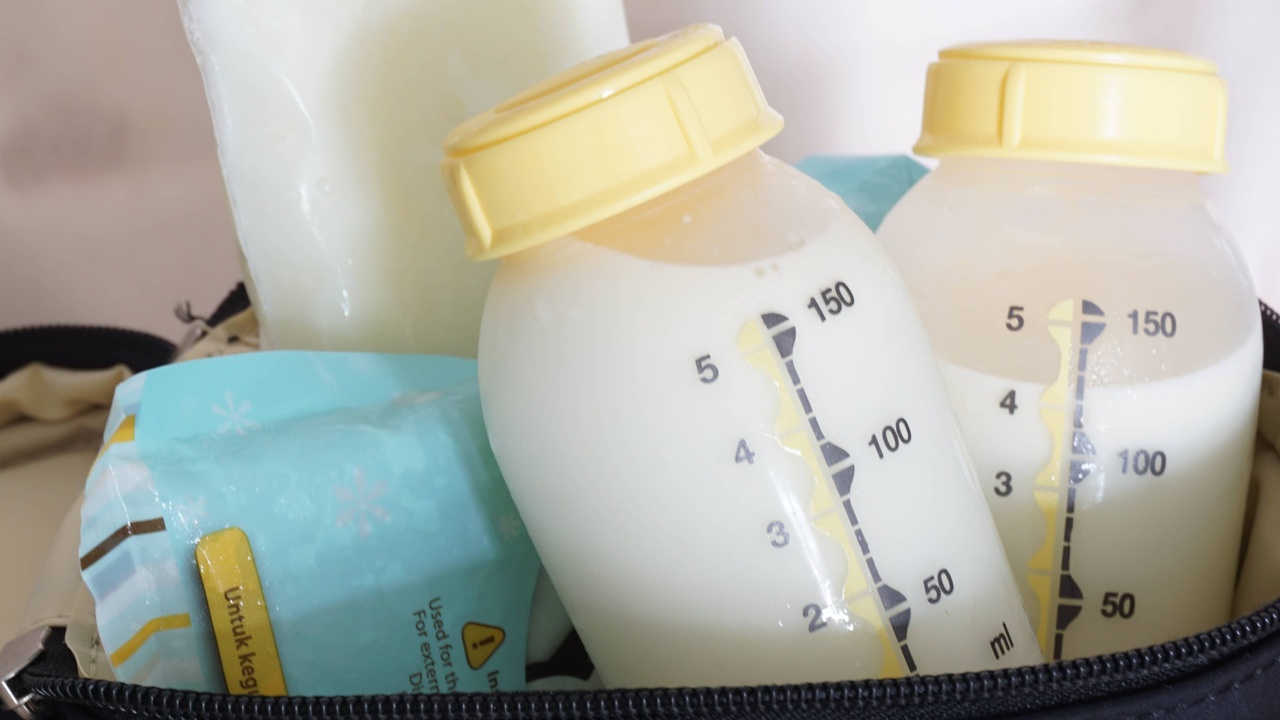5 Tips to Pump More Milk & Reduce Stress

Does Pumping Feel Overwhelming or Stressful?
Let’s be honest—pumping can feel like a lot. For many parents, it’s a necessary step toward meeting feeding goals, but it’s rarely the favorite part of the journey. When your milk output doesn’t meet your expectations, it can be frustrating and even make you question your supply.
If you’ve ever found yourself asking:
- How can I get more milk when I pump?
- How can I pump more milk efficiently?
- Why do I sometimes pump less milk than usual?
You’re in the right place! In this post, I’ll share my top 5 tips to help you maximize milk output, reduce stress, and build a pumping plan that actually works for you.
Tip #1: How Milk Removal Works and Boosts Pumping Efficiency
Think of your breast or chest like a bunch of grapes. The grapes are the milk-making cells, and the stems are the tubes (ducts) that carry milk to your nipple.
When your baby nurses, it stimulates your nipple, sending a message to your brain to release a hormone called oxytocin. Oxytocin tells the muscles around the milk cells (the grape clusters) to squeeze. This pushes milk through the ducts (the stems) and out of your nipple pores. This process is called the letdown reflex.
Some people feel the letdown as a tingle or rush, while others don’t feel it at all. Both are completely normal! Letdowns happen multiple times during a feeding session. You might notice your baby has periods of active swallowing alternating with periods of soft, gentle suckles. This pattern triggers more letdowns, helping remove as much milk as possible.
If you’re pumping, one way to increase milk output is to aim for more than one letdown.
Key takeaway:
It takes more than one squeeze to get all the milk out. Letdowns happen in cycles.
Tip #2: How to Trigger Multiple Letdowns While Pumping
A pump doesn’t work like a baby. It can’t naturally trigger as many letdowns because it doesn’t send the same signals to your brain. Most people only get one letdown when pumping, but the good news is, you can often get more by trying these strategies:
Start with the Right Flange Fit:
- Too big: You might pump less milk.
- Too small: It can hurt or cause damage.
- Perfect fit: Helps your pump work better and keeps you comfortable.
You might even need a different size flange for each side. If you’re not sure what size you need, ask for help from a lactation professional.
Two Ways to Get Multiple Letdowns:
Getting a second letdown is like unlocking a bonus round. Sometimes you’ll get it, and sometimes you won’t—and that’s okay! It doesn’t mean you’ve done anything wrong; it just wasn’t possible for that session.
Pump for a Longer Period
Some people find they can get another letdown if they pump for 25–30 minutes. But be careful—don’t do this every time. Pumping for too long, especially with a poor-fitting flange, can make your nipples sore or even cause damage.
Cyclical Pumping (Power Pumping)
Cyclical pumping just means switching between pumping and taking a break. Resting lets your body reset and respond to nipple stimulation again. This method can also make your pumping sessions more flexible.
- Option 1: Pump for 10 minutes, rest for 10 minutes, then pump for another 10 minutes.
- Option 2: Pump for 15 minutes, rest for 5 minutes, then pump for another 10 minutes.
If you’re short on time, continual pumping might be a better option to collect all your milk quickly. If you have more time, try cyclical pumping to see if it helps you tap into additional milk. Remember, flexibility is key—your needs and your body’s responses might vary from session to session.
Key takeaway:
Give yourself grace—figuring out what works best for your body takes time, and every session is a chance to be curious about what works and what doesn’t.
Tip #3: Reduce Stress to Boost Milk Supply
The letdown reflex relies on oxytocin, the hormone that helps release milk. But stress hormones like cortisol can block oxytocin. When you’re stressed, your body focuses on survival, not making milk.
Quick Ways to Relax While Pumping:
- Take deep breaths: Spend a minute breathing slowly and deeply before you start.
- Sip warm tea or listen to calming music: A cozy drink or soothing sounds can help you relax.
- Use a relaxation app: Try a meditation or stress-reducing app on your phone or watch.
- Focus on your baby: Hold something that smells like your baby or look at their photo. Imagine snuggling with your sweet baby before you pump.
If you can’t do these things every time, don’t worry. One low-output session doesn’t mean your milk supply is low. No single session reflects your overall supply. Be kind to yourself—stress happens, and that’s okay.
Tip #4: Maintain Your Pump for Better Milk Output
Your pump is a machine, and machines need care to work well. If your pump has membranes or valves, check them often. Replace them monthly or whenever your output seems lower than normal. Damaged parts can hurt suction and make pumping harder.
Tip #5: Embrace Flexibility and Self-Compassion While Pumping
Your body isn’t a machine, and how much milk you pump can change depending on:
- The time of day
- How stressed you feel
- Where you are in your cycle
Some people don’t respond well to pumps, and that’s okay—it’s not your fault. Pumping takes time and patience. If you’re struggling to pump enough milk, remind yourself:
You are worth more than the milk you provide. You are enough, no matter how much milk that happens to be.
Have More Questions? Check Out These Related Resources:


